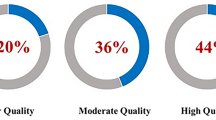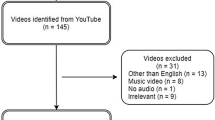Abstract
Introduction
Carpal tunnel syndrome is a disease that reduces the quality of life, and it is characterized by numbness, tingling in the fingers, and weakness in the hand, which we frequently encounter in our daily clinical practice. In this study, we aimed to evaluate the videos in terms of quality and reliability by watching the first 50 YouTube videos most relevant to the carpal tunnel in the YouTube video channel, which is often the first reference point as a source of information.
Method
Among the videos that appear after typing "carpal tunnel" in the search tab of the YouTube, we eliminated those with advertisements and those that are not in English and evaluated the top 50 most relevant videos about the carpal tunnel. A specific YouTube channel was not selected during the search; however, the most relevant videos on carpal tunnel syndrome were determined. The duration, the number of views, the number of likes, dislike numbers, upload times, and upload sources of the videos were recorded and evaluated. The content, quality, and reliability of the videos were evaluated according to the GQS, JAMA, and DISCERN scales.
Results
The average length of the 50 videos included in the study was 315.18, the average number of views was 150,977.4, and the average number of likes was 1410.86. The average number of days when the videos were uploaded to the internet was calculated as 1259.62 days. The GQS average of 50 videos included in the study was calculated as 2.7, the JAMA score average as 2.14 and the DISCERN score average as 33.62, and the video quality, content, and reliability were low. There was no statistically significant relationship between uploading sources of videos to the internet and video content, quality, and reliability (p > 0.05). The number of views, the number of days uploaded to the internet, the number of views, the number of likes and dislikes, like rates, and the video power index of the videos showed no statistically significant relationship with JAMA, DISCERN, and GQS.
Conclusion
Social media is one of the easiest methods to access information today. The high number of contents, quality, and reliability of social media videos are crucial for patients to obtain accurate information, gain awareness about diseases, and receive guidance on treatment. This study found out that the quality, content, and reliability of the existing videos on the carpal tunnel were at a low level. We propose that the videos’ content and quality should be improved and become more beneficial for patients.

Similar content being viewed by others
References
Naslund, J. A., Grande, S. W., Aschbrenner, K. A., & Elwyn, G. (2014). Naturally occurring peer support through social media: The experiences of individuals with severe mental illness using YouTube. PLoS ONE, 9, e110171.
Fox, S. (2011). The social life of health information, 2011 (pp. 1–33). Washington, DC: Pew Internet & American Life Project.
Fox, S., & Rainie, L. (2000). The online health care revolution: How the web helps Americans take better care of themselves. Washington, DC: Pew Charitable Trusts.
Samuel, N., Alotaibi, N. M., & Lozano, A. M. (2017). YouTube as a source of information on neurosurgery. World Neurosurgery, 105, 394–398.
Drozd, B., Couvillon, E., & Suarez, A. (2018). Medical YouTube videos and methods of evaluation: Literature review. JMIR Medical Education, 4(1), e3.
Lewis, S. P., Heath, N. L., Sornberger, M. J., & Arbuthnott, A. E. (2012). Helpful or harmful? An examination of viewers’ responses to nonsuicidal self-injury videos on YouTube. Journal of Adolescent Health, 51(4), 380–385.
Dubey, D., Amritphale, A., Sawhney, A., Dubey, D., & Srivastav, N. (2014). Analysis of YouTube as a source of information for West Nile virus infection. Clinical Medicine & Research, 12(3–4), 129–132.
Tekin, S. B., & Öğümsöğütlü, E. (2020). Assessment of the quality and reliability of the information on bone tumor on Youtube. Bagcilar Medical Bulletin, 5(3), 133–137.
Canale, S. T., & Beaty, J. H. (2012). Campbell’s operative orthopaedics (pp. 3637–3657). Elsevier Mosby.
Villafañe, J. H., Cantero-Tellez, R., Valdes, K., Usuelli, F. G., & Berjano, P. (2018). Educational quality of YouTube videos in thumb exercises for carpometacarpal osteoarthritis: A search on current practice. The Hand, 13(6), 715–719.
Keelan, J., Pavri-Garcia, V., Tomlinson, G., & Wilson, K. (2007). YouTube as a source of information on immunization: A content analysis. JAMA, 298(21), 2482–2484.
Madathil, K. C., Rivera-Rodriguez, A. J., Greenstein, J. S., & Gramopadhye, A. K. (2015). Healthcare information on YouTube: A systematic review. Health Informatics Journal, 21(3), 173–194.
Cassidy, J. T., & Baker, J. F. (2016). Orthopaedic patient information on the World Wide Web: An essential review. JBJS, 98(4), 325–338.
Lee, J. S., Seo, H. S., & Hong, T. H. (2014). YouTube as a source of patient information on gallstone disease. World Journal of Gastroenterology: WJG, 20(14), 4066.
Singh, A. G., Singh, S., & Singh, P. P. (2012). YouTube for information on rheumatoid arthritis—a wakeup call? The Journal of Rheumatology, 39(5), 899–903.
Staunton, P. F., Baker, J. F., Green, J., & Devitt, A. (2015). Online curves: A quality analysis of scoliosis videos on YouTube. Spine, 40(23), 1857–1861.
Fischer, J., Geurts, J., Valderrabano, V., & Hügle, T. (2013). Educational quality of YouTube videos on knee arthrocentesis. JCR: Journal of Clinical Rheumatology, 19(7), 373–376.
Sampson, M., Cumber, J., Li, C., Pound, C. M., Fuller, A., & Harrison, D. (2013). A systematic review of methods for studying consumer health YouTube videos, with implications for systematic reviews. PeerJ, 1, e147.
Garofolo, G., Akinleye, S. D., Golan, E. J., & Choueka, J. (2020). Utilization and impact of social media in hand surgeon practices. The Hand, 15(1), 75–80.
Funding
No funding.
Author information
Authors and Affiliations
Corresponding author
Ethics declarations
Conflict of interest
The authors declare that they have no conflict of interest
Ethical standard statement
Study does not contain any human or animal resources.
Informed consent
For this type of study informed consent is not required.
Additional information
Publisher's Note
Springer Nature remains neutral with regard to jurisdictional claims in published maps and institutional affiliations.
Rights and permissions
About this article
Cite this article
Mert, A., Bozgeyik, B. Quality and Content Analysis of Carpal Tunnel Videos on YouTube. JOIO 56, 73–78 (2022). https://doi.org/10.1007/s43465-021-00430-5
Received:
Accepted:
Published:
Issue Date:
DOI: https://doi.org/10.1007/s43465-021-00430-5




